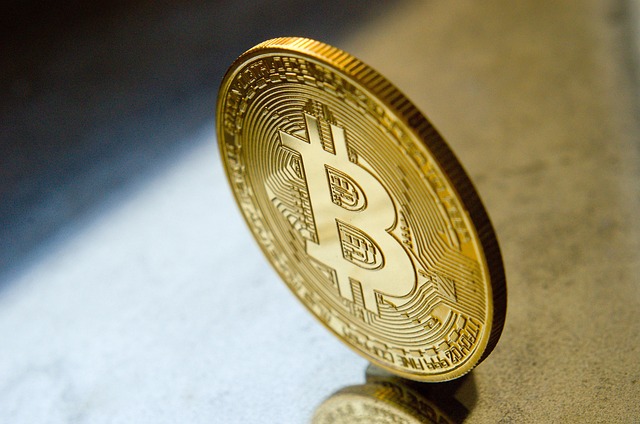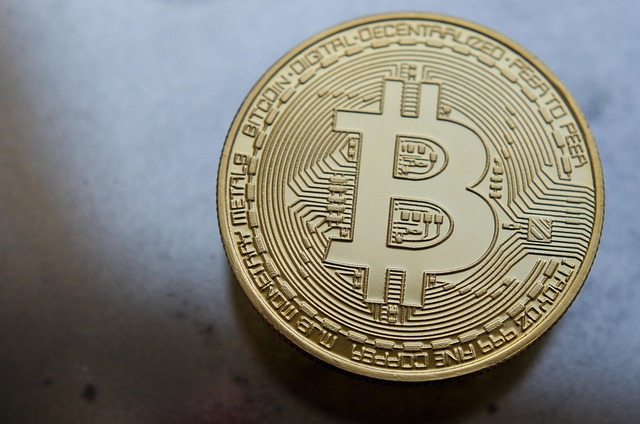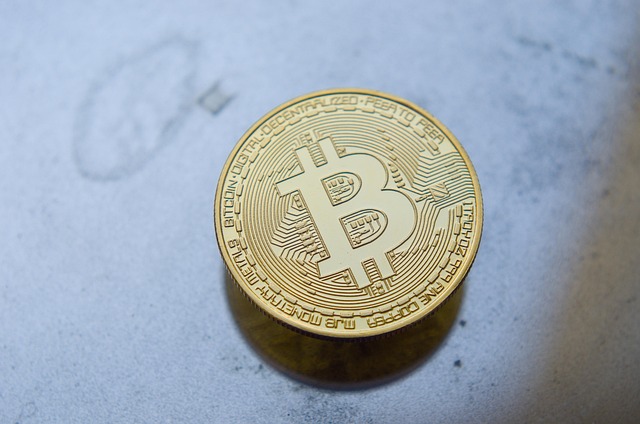Bybit Futures Trading Fees 2025 Guide
Author: Jameson Richman Expert
Published On: 2025-11-12
Prepared by Jameson Richman and our team of experts with over a decade of experience in cryptocurrency and digital asset analysis. Learn more about us.
Bybit futures trading fees can materially affect your profitability whether you scalp, swing trade, or run automated strategies. This comprehensive 2025 guide explains how Bybit calculates fees, funding rates, maker/taker dynamics, fee-reduction methods, and practical examples so you can estimate costs and optimize trades. Read on for actionable steps, comparisons with other exchanges, and links to tools and resources that help you trade futures more profitably.

Table of contents
- Why futures fees matter
- How Bybit structures futures fees
- Fee calculation examples
- How to reduce your Bybit futures trading fees
- Funding rates, leverage and effective cost
- Compare fees: Bybit vs other exchanges
- Trading strategies & bots to lower costs
- Where to check live fees and sign up links
- Actionable checklist to optimize fees
- Conclusion
Why futures fees matter
Fees directly reduce return on each trade. For high-frequency traders and scalpers, even a few basis points per trade accumulate quickly. For longer-term positions, funding rate costs (or credits) and overnight financing can determine whether a leveraged position is profitable. Understanding Bybit futures trading fees helps you: 1) choose order types (maker vs taker), 2) select optimal position size and leverage, and 3) decide whether to use automation or manual execution.
How Bybit structures futures fees
Most crypto futures exchanges, including Bybit, break fees into several parts. Below are the common components you’ll encounter on Bybit:
1. Maker vs Taker fees
Maker orders add liquidity (limit orders placed away from the market) and often receive a lower fee or even a rebate. Taker orders remove liquidity (market orders or limit orders that immediately match) and generally pay a higher fee. Choosing maker over taker when your strategy allows can save a meaningful amount.
2. Funding rate (periodic settlement)
Perpetual futures have no expiry and use a funding mechanism to tether the contract price to the spot index. The funding rate periodically exchanges payments between long and short holders. Funding can be either a cost or a credit depending on market direction and demand. Funding can dominate costs for multi-day leveraged positions.
3. Settlement or delivery fees
Inverse or delivery futures (with fixed expiry) may have settlement fees. Perpetuals usually do not, but always confirm on the exchange’s fee page.
4. Position/margin fees and financing
When you use cross margin or borrow funds (margin trading), interest or borrow fees may apply. These are separate from exchange trading fees and vary by asset and duration.
5. Conversion, withdrawal, and network fees
Moving funds on and off exchange involves network (miner) fees and sometimes conversion fees for fiat on/off ramps. These are not trading fees but affect overall cost of trading.
Note: Fee schedules can change. For live, official details check Bybit’s support/fees page. Also consider exchange announcements and your VIP tier, which can alter fee rates.

Fee calculation examples
Instead of quoting static fee numbers that may change, here are precise formulas and example scenarios you can adapt to current rates on Bybit.
Basic formulas
- Trade fee = Notional value × Fee rate
- Notional value = Entry price × Contract size × Quantity
- Funding payment = Position notional × Funding rate (applied at funding interval)
- Net cost per trade = Trade fees + Funding payments (if applicable) + slippage
Example 1 — Short-term scalping (maker order)
Assume you place a limit order that executes as a maker (adds liquidity). Your contract: 1 BTC-perpetual contract, entry 45,000 USD, quantity 0.2 BTC equivalent (notional = 9,000 USD). Maker fee example rate: 0.02% (use actual rate from Bybit when calculating).
- Notional = 45,000 × 0.2 = 9,000 USD
- Trade fee = 9,000 × 0.0002 = 1.80 USD
- If you capture a 0.5% scalp (price moves 225 USD): profit = 9,000 × 0.005 = 45 USD
- Fee share = 1.80 entry + 1.80 exit = 3.60 USD → net profit ≈ 41.40 USD
Small differences in fee rate or slippage change the profit substantially for scalpers, so seek maker fees or rebates where possible.
Example 2 — Multi-day leveraged trade (taker entry)
You open a 10x long position on ETH perpetual with notional 5,000 USD and taker fee example rate: 0.06%. Funding rate averages 0.01% per 8 hours (hypothetical).
- Trade fee (entry) = 5,000 × 0.0006 = 3.00 USD
- Trade fee (exit) = 3.00 USD (same) → Total trading fees = 6.00 USD
- Funding per 8-hour period = 5,000 × 0.0001 = 0.50 USD
- If you hold for 3 days (9 funding intervals) funding cost ≈ 4.50 USD
- Total fee + funding ≈ 10.50 USD
When computing ROI, include leverage effects: your initial margin might be 500 USD (10x leverage), so fees and funding are a higher share of your margin capital.
How to reduce your Bybit futures trading fees
Here are practical, actionable ways to cut your Bybit futures trading fees.
1. Use limit (maker) orders when possible
Maker orders often cost less or earn rebates. Plan entries and exits with limit orders instead of market orders if you can tolerate execution wait time.
2. Increase VIP tier or volume-based discounts
Many exchanges offer tiered fee programs that reduce fees based on 30-day trading volume or holdings. Track your volume and split trades across accounts only where allowed by the exchange terms.
3. Use native discounts, coupons, or tokens
Sometimes native exchange tokens or coupons reduce trading fees. If Bybit offers a token-utility discount or coupons, evaluate costs vs benefits before buying or locking tokens.
4. Optimize order routing and slippage
Reducing slippage reduces effective cost. Place limit orders to avoid market impact and use order size tactics (slice large orders into smaller ones, use TWAP/VWAP algorithms) to minimize taker fills.
5. Trade on the best market for fee structure
If fee structure differs between perpetual and delivery contracts or by quote currency (USDT vs USDⓈ-M), choose the market that optimizes costs for your strategy.
Funding rates, leverage and effective cost
Funding rates are a key differentiator for perpetual contracts. Two important points:
- Funding is paid or received every funding period depending on the sign of the rate and your position direction. Longs pay shorts when funding > 0; shorts pay longs when funding < 0.
- Leverage magnifies the economic effect of funding. Funding is applied to notional exposure, not just initial margin, making it crucial to include funding in multi-day profitability calculations.
How funding is calculated (concept)
Funding payment = Position notional × Funding rate. Check the next funding timestamps and historical rates before entering a trade. Exchanges publish funding rate history — review it to estimate expected costs over your holding period.
For educational background on futures and margin mechanics, see the Wikipedia entry on Futures contract and Investopedia’s articles on margin trading for fundamentals.

Compare fees: Bybit vs other exchanges
Comparing fee schedules helps you decide where to place a trade. Rather than quoting static values (which change), compare using the same notional and order type across exchanges. Below are sign-up links to popular alternatives if you want to evaluate directly:
- Binance (register): Binance futures registration
- MEXC (register): MEXC invite
- Bitget (register): Bitget referral
- Bybit (register): Bybit invite
When comparing, include:
- Maker and taker fee rates;
- Funding rate averages and volatility;
- VIP/volume discounts;
- Withdrawal and deposit costs;
- Execution quality and liquidity (deeper markets often reduce slippage).
Trading strategies & bots to lower costs
Certain strategies are inherently cheaper in fee terms; others can be made cheaper with automation.
Low-fee strategies
- Limit-order market making — capturing spread while earning maker rebates.
- Swing trading with low turnover — fewer round trips reduce cumulative fees.
- Carry trades when funding is favorable — capturing funding credits rather than paying them.
Automation and trading bots
Automation helps optimize order placement, slice orders to avoid taker fills, and execute strategies 24/7 with discipline. If you’re building or using trading bots, focus on minimizing taker fills and monitoring funding schedules.
For deeper guidance on building trading bots and automation best practices, see this comprehensive guide: Build a crypto trading bot in 2025 — ultimate deep dive.
If you prefer ready-made bot strategies or examples for KuCoin, this tutorial walks through setting up strategies and risk control (concepts transferable to Bybit strategies): How to make money with KuCoin trading bot.
Where to check live fees and sign up links
Fee schedules change. Always verify live rates on the official site and your account dashboard (VIP tier, discounts). Useful starting points:
- Bybit official fees/support page — check the exchange for the latest maker/taker and funding details.
- Exchange announcements and blog — for one-time fee promotions or policy changes.
- Your account fee dashboard — after registration, exchanges show personalized rates based on tier.
Sign-up links (affiliate/referral) for quick access to create accounts and compare fee experiences:
- Bybit (invite): Open Bybit account
- Binance (register): Open Binance account
- MEXC (register): Open MEXC account
- Bitget (register): Open Bitget account

Actionable checklist to optimize Bybit futures trading fees
- Check bybit fees for your account level (maker/taker, funding rates). Update this monthly.
- Use limit orders whenever execution risk is acceptable; prefer maker fills for rebates.
- Estimate cumulative funding if you hold positions > 24 hours — include it in trade profitability models.
- Apply for VIP or volume discounts when your trading volume justifies it.
- Use execution tactics (slicing, TWAP) for large orders to reduce taker fees and slippage.
- Consider automation: use a bot to place maker orders and capture spread; test on paper/live small amounts.
- Track historical funding rate data and adjust position sizing to avoid repeat funding drains.
- Monitor promotions or fee vouchers on Bybit to temporarily reduce costs.
Examples & case studies
Below are example scenarios showing how fee choices influence outcomes.
Case study A — Market taker vs maker for same trade
Trade details: Notional 2,000 USD; expected price move 1% (profit 20 USD).
- Scenario 1 (taker fees): taker fee 0.06% → fee per leg = 1.20 USD → round trip = 2.40 USD → net profit ≈ 17.60 USD
- Scenario 2 (maker fees): maker fee 0.00% or rebate → round trip = 0 USD → net profit = 20 USD
Difference = ~2.40 USD, which is 12% of the gross profit — significant for small-edge strategies.
Case study B — Funding drains on leveraged carry
Trade: 20x long on a coin with sustained positive funding, notional 10,000 USD. Funding averages 0.02% per 8h (~0.06% per day).
- Daily funding cost = 10,000 × 0.0006 = 6 USD
- If initial margin is 500 USD (20x), funding reduces margin by >1% per day — quickly eroding P&L.
Lesson: Avoid prolonged leveraged exposure during periods of strongly one-sided funding unless your thesis includes funding credits or offsetting strategies.
Further reading and trading resources
To sharpen your trading edge beyond fees, consider market signals, whale behavior, competition participation, and advanced automation techniques:
- Whale sell-off signals and strategies: Ethereum whale sell-off signals — use on-chain signals to anticipate funding and price moves.
- Trading competitions: What is a trading competition — complete guide — competitions can have fee-free trading windows and prizes.
- Price predictions and market outlooks (for context): World App Coin price prediction 2025.

Final thoughts
Understanding Bybit futures trading fees is more than memorizing a fee table — it’s applying the right order types, holding periods, position sizing, and automation to reduce friction and increase edge. Carefully model trade scenarios with current maker/taker rates and recent funding history before putting on leveraged positions. Use the links and checklist above to build a systematic approach to fee-aware futures trading.
For advanced automation and tactics, check the detailed trading bot guide: Build a crypto trading bot in 2025 — deep dive.
Want to explore other strategy guides and practical signal analysis? Read this KuCoin bot strategies article for transferable tactics: KuCoin trading bot strategies & risk control.
Conclusion
Mastering Bybit futures trading fees requires a mix of up-to-date fee awareness, smart order selection, and strategic trade planning. Reduce costs by prioritizing maker fills, leveraging volume discounts, and accounting for funding when calculating prospective returns. Use automation strategically to execute low-fee strategies reliably, and always confirm live rates on the exchange before trading.
Useful quick links:
- Bybit invite: Open Bybit account
- Binance: Open Binance account
- MEXC: Open MEXC account
- Bitget: Open Bitget account
If you’d like, I can:
- Help build a fee calculator spreadsheet for Bybit with maker/taker and funding inputs;
- Compare live fee snapshots across Bybit, Binance, MEXC, and Bitget for your preferred markets;
- Suggest bot order-routing rules to minimize taker fills.
Tell me which option you prefer and I’ll prepare it.